Order †Ichthyosauria Scientific name Ichthyosaurus Rank Genus | Phylum Chordata Higher classification Ichthyosauridae | |
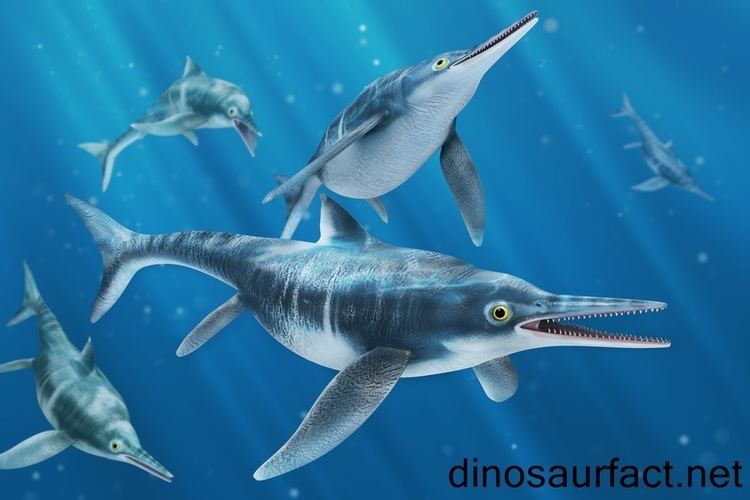 | ||
Similar Plesiosaurus, Reptile, Parasaurolophus, Plesiosauria, Elasmosaurus | ||
Ark survival evolved new dinos plesiosaurus ichthyosaurus
Ichthyosaurus (derived from Greek ιχθυς/ichthys meaning 'fish' and σαυρος/sauros meaning 'lizard') is a genus of ichthyosaurs from the late Triassic and early Jurassic (Rhaetian - Pliensbachian) of Europe (Belgium, England, Switzerland) and Asia (Indonesia). It is among the best known ichthyosaur genera, with the Order Ichthyosauria being named after it.
Contents
- Ark survival evolved new dinos plesiosaurus ichthyosaurus
- Description
- History of discovery
- Classification
- Palaeobiology
- Cultural significance
- References
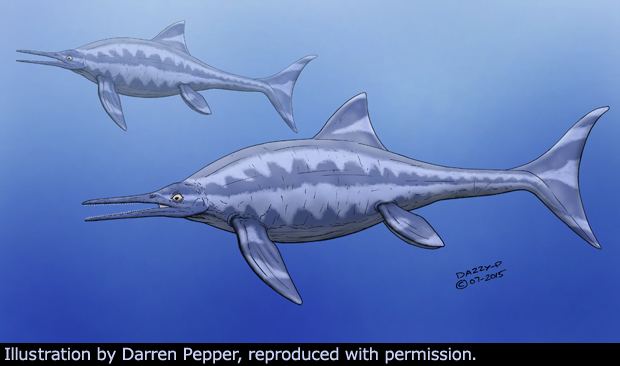
Description
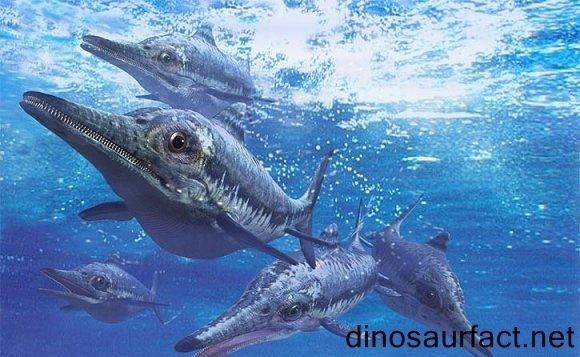
Ichthyosaurus were smaller than most of their relatives, with individuals measuring up to 2 metres (6.6 ft) in length. Hundreds of well-preserved, fossilised skeletons have been found in Jurassic rock at Holzmaden, Germany. Some of the bones were still articulated. Some fossils still had baby specimens inside them, indicating that Ichthyosaurus was viviparous. Similar finds in the related Stenopterygius also show this. The German fossils also featured the outline of Ichthyosaurus's skin, revealing that it had a fleshy dorsal fin on its back and a large caudal fin. Other ichthyosaur fossils showed this feature was not limited to Ichthyosaurus.
History of discovery
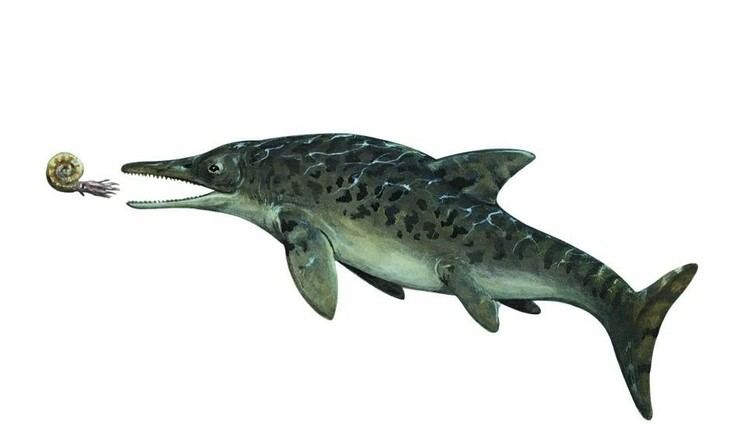
Ichthyosaurus was the first complete fossil to be discovered in the early 19th century by Mary Anning in England.
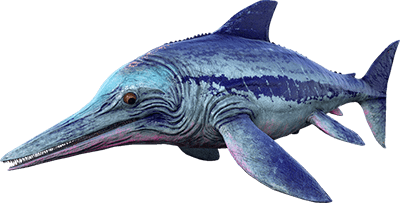
I. anningae, described in 2015 from a fossil found in the early 1980s in Dorset, England, was named after Anning. The fossil was acquired by Doncaster Museum and Art Gallery, where it was misidentifed as a plaster cast. In 2008, Dean Lomax, from the University of Manchester, recognised it as genuine and worked with Judy Massare, of the State University of New York, to establish it as a new species.
Classification
The cladogram below follows the topology from a 2010 analysis by Patrick S. Druckenmiller and Erin E. Maxwell.
Palaeobiology
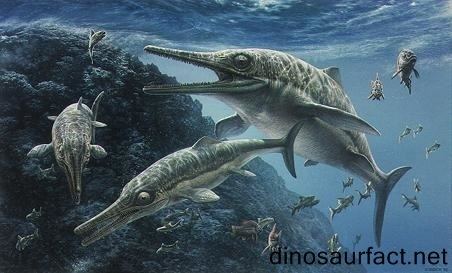
Ichthyosaurus ear bones were solid, probably transferring water vibrations to the inner ear. Still, hunting by sight was the creature's main feeding activity; it had huge, sensitive eyes, protected by bony shields. Coprolites of Ichthyosaurus reveal that its diet consisted of fish and squid.
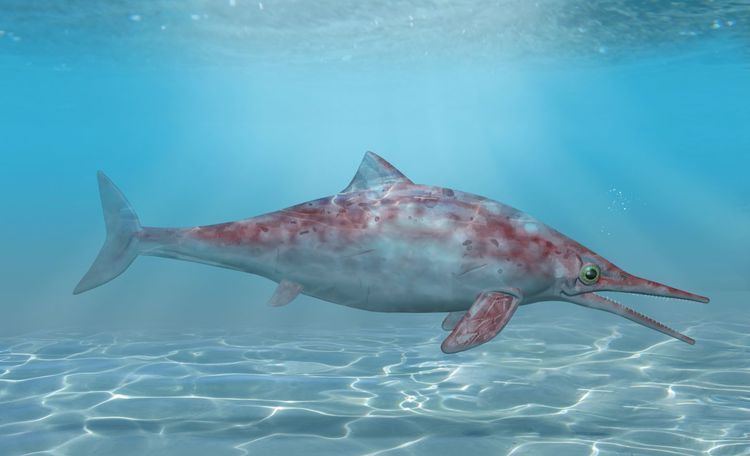
It was initially believed that Ichthyosaurus laid eggs on land, but fossil evidence shows that in fact the females gave birth to live young. As such, they were well-adapted to life as fully pelagic organisms (i.e. they never came onto land). The babies were born tail first to prevent them from drowning in the water.
Cultural significance
Joseph Victor von Scheffels poem Der Ichthyosaurus describes its extinction in humouristic verses. A monument on Hohentwiel cites it as well. The poem has been translated among others by Charles Godfrey Leland Some of the stanzas:
